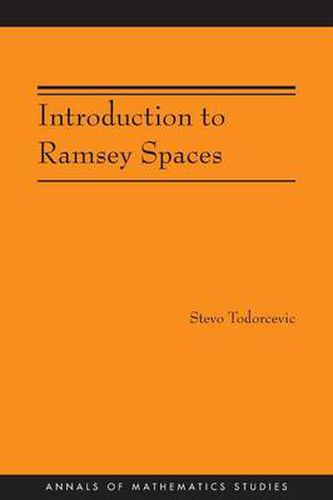Readings Newsletter
Become a Readings Member to make your shopping experience even easier.
Sign in or sign up for free!
You’re not far away from qualifying for FREE standard shipping within Australia
You’ve qualified for FREE standard shipping within Australia
The cart is loading…






Ramsey theory is a fast-growing area of combinatorics with deep connections to other fields of mathematics such as topological dynamics, ergodic theory, mathematical logic, and algebra. The area of Ramsey theory dealing with Ramsey-type phenomena in higher dimensions is particularly useful. Introduction to Ramsey Spaces presents in a systematic way a method for building higher-dimensional Ramsey spaces from basic one-dimensional principles. It is the first book-length treatment of this area of Ramsey theory, and emphasizes applications for related and surrounding fields of mathematics, such as set theory, combinatorics, real and functional analysis, and topology. In order to facilitate accessibility, the book gives the method in its axiomatic form with examples that cover many important parts of Ramsey theory both finite and infinite. An exciting new direction for combinatorics, this book will interest graduate students and researchers working in mathematical subdisciplines requiring the mastery and practice of high-dimensional Ramsey theory.
$9.00 standard shipping within Australia
FREE standard shipping within Australia for orders over $100.00
Express & International shipping calculated at checkout
Ramsey theory is a fast-growing area of combinatorics with deep connections to other fields of mathematics such as topological dynamics, ergodic theory, mathematical logic, and algebra. The area of Ramsey theory dealing with Ramsey-type phenomena in higher dimensions is particularly useful. Introduction to Ramsey Spaces presents in a systematic way a method for building higher-dimensional Ramsey spaces from basic one-dimensional principles. It is the first book-length treatment of this area of Ramsey theory, and emphasizes applications for related and surrounding fields of mathematics, such as set theory, combinatorics, real and functional analysis, and topology. In order to facilitate accessibility, the book gives the method in its axiomatic form with examples that cover many important parts of Ramsey theory both finite and infinite. An exciting new direction for combinatorics, this book will interest graduate students and researchers working in mathematical subdisciplines requiring the mastery and practice of high-dimensional Ramsey theory.